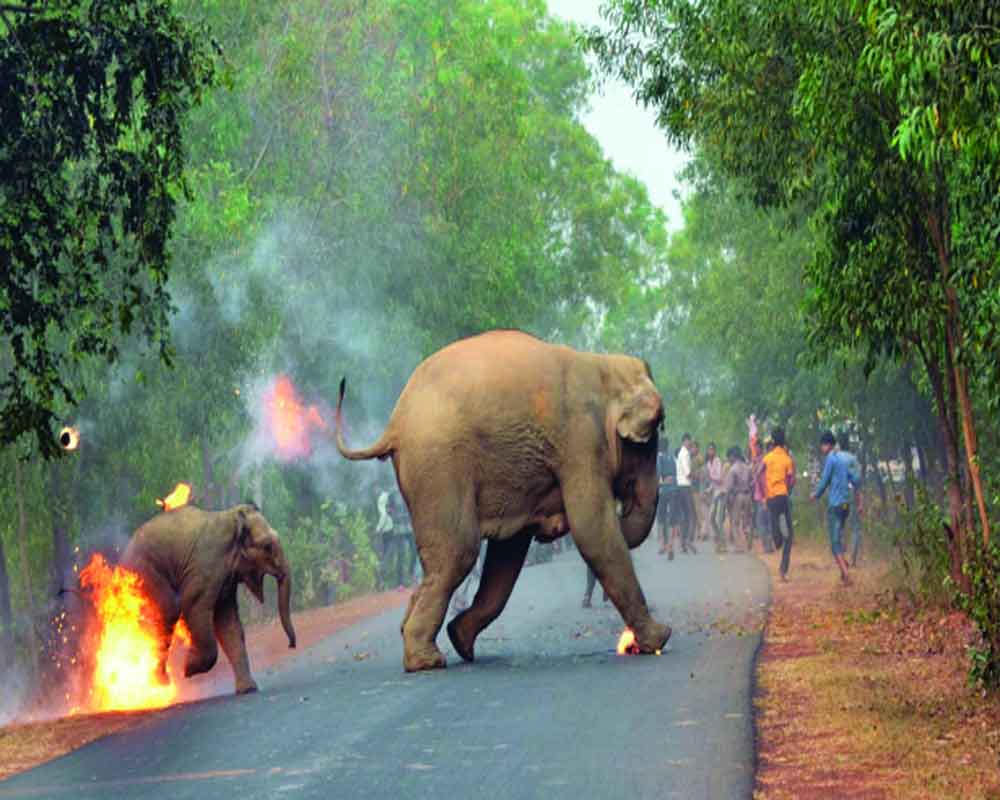To ensure the protection of these majestic creatures, it is imperative to revisit and revise legislative frameworks with a focus on ecological sustainability
India’s rich biodiversity includes a significant population of Asian elephants, which are not only an integral part of the country’s wildlife heritage but also hold cultural and religious significance. However, the increasing instances of human-elephant conflict (HEC) have become a pressing concern for both conservationists and those living near elephant habitats.
The root causes of HEC are multifaceted, primarily stemming from habitat loss and fragmentation due to human activities. As India’s population expands, so does the need for land for agricultural and developmental activities. This expansion often leads to encroachment into elephant territories, resulting in the destruction or fragmentation of their natural habitats. Consequently, elephants are forced to venture closer to human habitations in search of food and space. Mining activities, in particular, lead to deforestation and habitat degradation, disrupting elephant migratory routes and undermining the scope and health of elephant habitats. Similarly, urbanisation and infrastructure development often intersect with elephant corridors, pushing these gentle giants into unfamiliar and potentially dangerous territories. Climate change is another significant factor in this conflict. Changes in climate patterns can affect the availability and distribution of food and water sources in elephant habitats. Extreme weather events like droughts, floods and high temperatures can force elephants to migrate in search of these resources, often bringing them into conflict with humans.
The current State of HEC in India is alarming. Over 500 humans are killed annually in encounters with elephants and more than 100 elephants lose their lives due to human-related activities, including poaching for ivory, poisoning, electrocution and collisions with trains. Train collisions are the second-highest cause of unnatural elephant deaths in the country, following accidental electrocution. Over the past decade, train collisions have claimed the lives of more than 200 elephants.
As mega-herbivores, elephants consume up to 150 kilograms of forage and drink up to 190 litres of water per day. This necessitates a large foraging area, typically spanning 100-1,000 km² for a family herd, to provide a diverse diet of grasses, shrubs and fruits. However, navigating large areas to find sufficient food and water becomes a challenge when these areas overlap with human activities. This often results in crop raiding, property damage, and, in some tragic instances, human casualties. These incidents, unfortunately, lead to retaliatory actions from humans that can be fatal for these majestic creatures, further intensifying their fear and mistrust of humans. Farmers, particularly those with limited resources struggle to cope with crop losses. This hardship breeds resentment towards elephants, undermining conservation efforts and trapping both humans and elephants in a cycle of violence.
Since 2019, there have been over 1500 human fatalities reported due to elephant attacks. In 2023-24 alone, Odisha reported 149 elephant deaths due to HEC. Mineral-rich districts like Dhenkanal, Angul, Keonjhar and Sundargarh have been hit the hardest, with Dhenkanal alone witnessing 130 elephants and 227 human deaths over the last decade.
In August 2023, three elephants were electrocuted at the Rani Tea EState near Guwahati due to low-hanging high-voltage wires. This was not an isolated incident; back in October 2021, sagging power lines near the Dihing-Patkai National Park claimed the lives of another three elephants. The situation worsened in October 2022, when within a single week, 11 elephants across Assam lost their lives to human-related hazards including electrocution, crop poisoning and train collisions.
Western Maharashtra, a region not traditionally known for elephant habitation, saw a significant change in 2002 when elephants migrated from Karnataka. This movement was largely attributed to their displacement from the Dandeli Wildlife Sanctuary, a place they had inhabited comfortably until 1990. The construction of the Kali hydroelectric project is believed to have been the catalyst for their relocation to the districts of Kolhapur and Sindhudurg in Maharashtra, leading to notable incidents of crop raiding. A similar pattern emerged in 2022 when a herd of 22 elephants trekked from Chhattisgarh to Maharashtra, settling in the lush forests along the Wain-Ganga, Pranhita and Dina river basins. This migration has been linked to increased human encroachment, the construction of two canals in Odisha and mining disturbances in their traditional corridors.
The Wayanad region, a vital watershed for Karnataka and Tamil Nadu, is currently facing a multitude of environmental challenges such as deforestation, irresponsible tourism and unscientific development. Such activities are posing a significant threat to the ecological balance of the region, endangering the lives of both humans and wildlife. Wayanad plays a critical role in maintaining regional biodiversity. However, ongoing habitat degradation in this region could potentially intensify the water crisis in the Kaveri basin and escalate the HEC, which has tragically led to 41 fatalities already. Similarly, in the northeastern States of Assam and West Bengal, expanding tea plantations and human settlements have encroached on elephants’ traditional grounds, leading to frequent HEC incidents.
Addressing HEC requires a multi-pronged approach that balances the needs of wildlife conservation with the socio-economic realities of human populations living near elephant habitats. This includes securing and restoring elephant corridors to ensure safe passage for elephants between different habitats, thereby reducing the likelihood of them entering human-dominated landscapes. Recognising this need, the Indian Government has launched an ambitious initiative known as Project Elephant. This program focuses on enhancing elephant habitats by creating a network of reserves, corridors and protected areas. To address the common issue of crop raiding in human-elephant interactions, the project employs innovative technologies such as early warning systems and elephant-proof barriers. It also implements various strategies like durable and solar-powered electric fences and biological deterrents including bio-fencing with cacti, beehive fences and chilli smoke to deter elephants.
Enhancing the natural food supply within forests is another essential strategy for preventing elephants from entering human territories. This involves improving water conservation, regenerating forests by replanting and nurturing native trees and plants, implementing fire protection and removing invasive species. Programs focused on eco-tourism and livelihood diversification not only engage local communities in conservation but also provide them with sustainable economic alternatives. Success stories from the Nilgiri Biosphere Reserve and the Kaziranga-Karbi Anglong landscape underscore the effectiveness of community-led conservation endeavours, strategic land-use planning, trans-border collaboration and habitat restoration in diminishing conflict incidents. Kerala has also taken a bold initiative to relocate people from forest regions and reforest agricultural lands, despite the central Government’s refusal to fund this Rs. 620 crore project. The State’s declaration of HEC as a State-specific disaster and the involvement of the Kerala State Disaster Management Authority in conflict management, are significant steps towards addressing this complex issue.
Statutory support is fundamental in the conservation efforts addressing the HEC. Elephants, listed as endangered on the IUCN Red List, are protected under the Indian Wildlife (Protection) Act and the Convention on International Trade in Endangered Species.
Recent amendments to the Forest Conservation Act of 1980 have raised concerns regarding their impact on elephant reserves and corridors, particularly within the 100 km strip of India’s boundary where the majority of these reserves and corridors are located. These changes could potentially worsen the fragmentation and degradation of these vital habitats, thereby intensifying the HEC. The Forest Rights Act of 2006, while well-intentioned in empowering forest-dwelling communities, has also had unintended consequences. Its implementation has sometimes resulted in further encroachments and habitat fragmentation, which can force elephants to venture into new areas in search of refuge and resources, increasing the likelihood and severity of conflicts. Post-project monitoring, particularly in the mining industry, is often insufficient, leading to a neglect of wildlife protection measures that were stipulated during the project’s approval. This oversight can result in significant harm to elephant populations and their habitats, undermining conservation efforts.
As we move forward, let us remember that our fates are intertwined with those of the elephants and all wildlife. Their survival is our survival. Their well-being reflects the health of our planet and their continued existence enriches our world in ways that cannot be quantified. It’s high time we recognise our role and act responsibly, ensuring a future where humans and wildlife coexist harmoniously, each playing their part in maintaining the balance of our shared ecosystem.
(The writers are former principal chief conservator of Forests, UP and Maharashtra; views are personal)


























